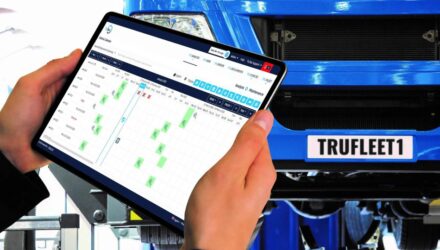Commercial fleet operators are being warned satnav systems need to be fit for purpose following the latest bridge strike data being published by Network Rail.
Traffic commissioners say that the number of bridge strikes remains alarmingly high with 1,624 incidents in 2020/21. This was marginally down on the 1,720 reported the previous year.
One of the reasons for these incidences occurring, say the traffic commissioners, is poor route planning and the reliance on inappropriate satnav systems, which lack commercial functionality to warn the driver of all the critical points on routes.
While satnav technology can be employed effectively and efficiently, they say, the devices used must be fit for a commercial role.
Good satnav devices will regularly be updated with up-to-date information on the road network, including height restrictions.
However, while it may assist the driver to avoid some of these incidents, especially when routes change during a journey, they say that having suitable satnav equipment is not a substitute for effective route planning.
The traffic commissioners, who are responsible for the licensing and regulation of those who operate heavy goods vehicles (HGVs), buses and coaches, say there are many incidents of commercial vehicles using inappropriate routes, including not complying with weight limits, which results in damage to roads, congestion and risks the safety of other road users.
Following a bridge strike in St. Helens, the traffic commissioner held a public inquiry and concluded that the primary cause of the incident was the driver’s failure to carry out his responsibilities in a professional manner.
His HGV driver’s licence was revoked, and he was disqualified from holding an HGV licence for six months.
However, the traffic commissioner also found that the operator could have done more to prevent the incident and the operator found their licence permanently curtailed.
The traffic commissioners expect operators and drivers to treat this issue seriously and take responsibility. Any failure to do so could lead to an operator or driver having to appear before a traffic commissioner.
To minimise the risk of poor road choices, traffic commissioners are offering the following check list:
- Operators should always make sure their satnav is a commercial vehicle satnav, not one designed for a car. Make sure the device is up to date. Roads and maps are constantly changing. It is the operator’s responsibility to plan correctly.
- Make sure that if satnavs are provided to drivers, they are trained to use them and, importantly, the correct checks and procedures are in place to ensure they do. They must know how to set the alarm if they run close to an obstacle.
- Have a satnav policy within your operation. Set rules for use of personal satnavs and ensure they are fit for purpose.
- Don’t assume you know the restrictions on a road, check first.
- Double check on an up-to-date map. You could use Google Street Views to get a sight of an unfamiliar route or junction, including delivery or pick up points. Operators should establish whether there are any localised issues that impact on routes and include this in customer information notes for drivers.
- Know your vehicle height, width and weight, and ensure your drivers do – provide height conversion charts.
- Even when your vehicle is ‘not in service’ your route must still be planned. Taking unsuitable shortcuts back to the depot or when going for maintenance is a risk.
The warning from traffic commissioners comes after Network Rail relaunched its ‘Wise Up, Size Up’ campaign, reminding lorry drivers and haulage operators to take better care by knowing the height of their vehicles and choosing suitable routes before they head out on journeys.
Read more about bridge strikes, here.


















